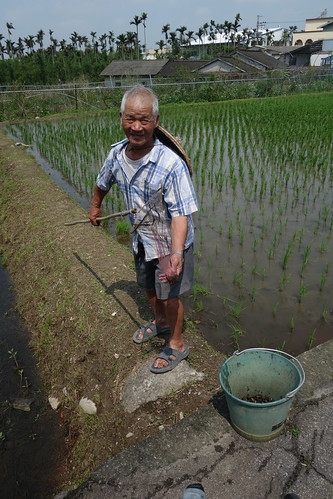A friend writes me...
"[my wife] has had her DNA analyzed. It is really interesting. Each haplogroup is atypical for Taiwan and Fujianese. The Maternal marker is probably ethnic Yue. The paternal marker is probably Pazeh or Hoanya. [Wife]'s paternal grandmother is very closely related to indigenous Cambodians (Hmong). Possibly ethnic She people who were Hakkacized in Fujian, or from Sundaland.Fujian people and Taiwanese people mixed with Austronesian peoples from all over SE Asia. I can't wait for the first real accessible history of the great Austronesian people in English.
_______________________
[Taiwan] Don't miss the comments below! And check out my blog and its sidebars for events, links to previous posts and picture posts, and scores of links to other Taiwan blogs and forums!

Yue, Pazeh, Hoanya, Hmong, She. . . Yup, do not allow the post-WWII KMT-induced fables of Hakkacization and Hokloization to draw the Han blanket over the Western Pacific area that Formosa is.
ReplyDeleteTake Ms. Tsai whose Hakka, Hoklo and Paiwan origins are listed in that order in the local media. Tsai Ying-Wen’s heredity tells us that she is a plain, 100% Formosan of Paiwan and Pingpu stock. The cradle of her family is located in the fishing community of Fenggang in the Fangshan township of Pingtung County.
Is the “daughter of the Paiwan” fluent in English and Mandarin only? If her language skills are telling of her allegiance. . . . that green frog uttered its last croak already.
Had not the political evolution of Taiwan been derailed seventy years ago, instead of Mandarin, Ms. Tsai ought to be speaking Japanese as her first language with a smattering of Paiwan to add a local shine. She ought to have been brought up speaking Japanese at home and now in her official capacity.
Her father used to call her Chibi (ちび), a Japanese term of endearment referring to the cuteness of one’s child, usually the youngest of the brood which she was, was not she?
Although her first name would be a rarity in Japan, on checking Japanese christening sites using "英文", I came up with a few combinations such as Aya, Eimi, Emi. . . . others. Both ideograms by themselves read “Aya”, a girls first name much liked in 1990s Japan. But the first is usually pronounced “hide”while the second is spelled “fume" or even “mi”.
At any rate, any Japanese pronunciation of her first name sounds a lot more alluring than the clumsy English Yingwen Tsai. Wish Ms. Tsai would be more forthcoming with this aspect of her identity through the local media.
—————————————————
蔡英文為屏東縣枋山鄉楓港人,父親是客家人,母親是福佬人,祖母為原住民排灣族人,她不但客家話不大會說,福佬話也很爛,反而是華語說得最流利。這除了是她在台北長大、就學,更要拜國民黨語言政策所賜。
http://talk.ltn.com.tw/article/paper/539090
但蔡潔生情史豐富,共有四房、十一名子女,也讓蔡家故事蒙上神祕色彩。母親張金鳳是河 洛人,則是父親第四房,生有四名子女,排行老么,小名為「Chibia」,也就是「最小的」之意。
http://www.appledaily.com.tw/appledaily/article/forum/20160117/37016629/
erica brindley's recent book, "ancient china and the yue," gets into the ancient austronesian diaspora, and is worth a read.
ReplyDeleteThanks!!
ReplyDeleteWhere did your friend's wife get her DNA analyzed?
ReplyDeleteSome kind of kit my friend's mother sent them.
ReplyDelete